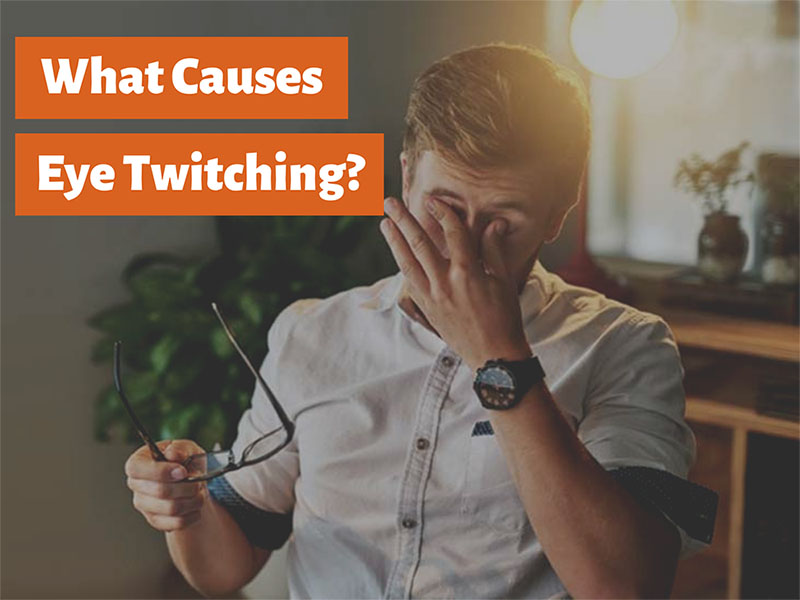Eye twitching is a very common condition that most people will experience at least once in their lifetime. Eyelid twitching is also called benign eyelid myokymia by eye doctors.
Usually lasts a few days to weeks but sometimes can last weeks or months. While it can be a nuisance, you’ll be happy to know in most cases it is completely benign
What is eyelid twitching?
An eyelid twitch is an involuntary spasm of the muscle that controls the eyelids. The twitching is typically painless and limited to the eyelid (it does not affect the forehead, cheeks, mouth, etc).
Almost always, an eyelid twitch is monocular – meaning only in one eye at a time – though you can get one in the other eye at some other time. Usually it comes and goes throughout the day.
There are two conditions that are similar to benign myokymia. The first is essential blepharospasm. This starts as an increased blink rate but then turns into a more forceful blinking of both eyelids at the same time. The other condition is hemifacial spasm. This is a spasm of the muscles of the eye, cheek, mouth and neck, but only on one side of the face.
The cause of eyelid twitches is typically some sort of stress: not enough sleep or stress at work or home. Other causes include caffeine (soda or coffee) or heavy alcohol intake. Finally, dry eyes, eye strain and allergies also increase the risk.
What are the best treatments for eye twitching?
It’s reassuring to know that most cases of myokymia will resolve on their own, but the following treatments can shorten the duration of your symptoms.
- Get more rest and try to reduce stress at home or the workplace. It might be difficult to reduce stress but at least knowing it can be a cause of your eye twitching can put you in the right direction. Maybe just taking an extra break or two at work can be helpful in reducing stress and allowing the eyes to relax.
- Consume less caffeine and drink more water.
- Quinine, which is available in tonic water, is a muscle relaxer. Drink 5 oz per day.
- Consider an OTC oral antihistamine such as Benadryl.
- Botox has shown to be quite effective especially if the twitching is excessive.
Conclusion
Remember that almost all eye twitches go away on their own with a little time. However, if it doesn’t go away in a few weeks it can be a sign of a more serious neurological disorder that should be evaluated by an eye doctor. Other symptoms that should have you seek professional attention is if the twitching completely closes the eye, involves other parts of the face or if your upper eyelid is drooping. In most cases though, you can rest easy knowing that the eye twitching will eventually stop on it’s own.

